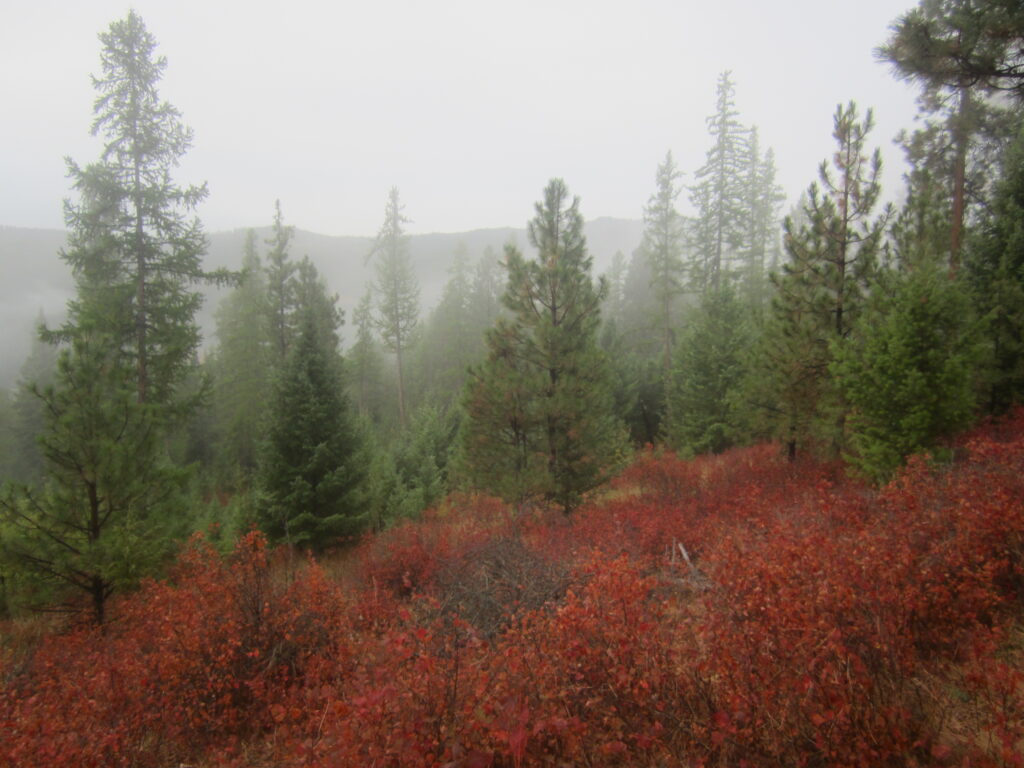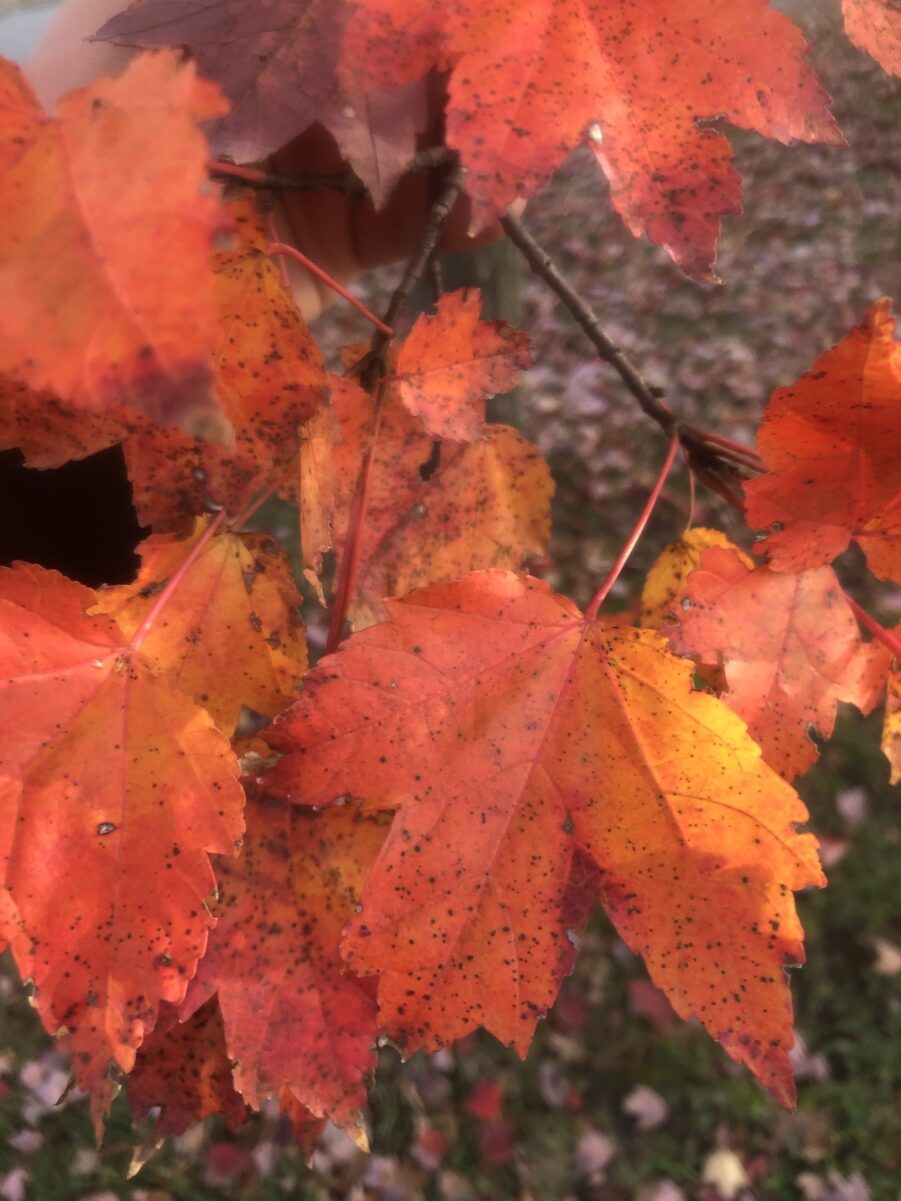The most iconic sign of autumn is the turning of the leaves. But why do the trees turn colors? If you’re lucky enough to live somewhere with dramatic “fall colors”, then you’ve experienced the incredible beauty of landscapes painted with dazzling reds, oranges, and yellows.
Poets from all over the world have described this sudden, incredible transformation with over-the-top language like licking flames and sparkling gold. Poetic or not, the rest of us often find this same enjoyment, whether we’re looking out the window with a pumpkin-spiced latte or excitedly donning our best leaf-crunching Fall boots.

But how do trees change color? And why?
We know that when the rich green of summer leaves begin to change, that winter is coming. It’s one of those things that we accept with certainty, like dark clouds meaning rain.
But why does winter do this to some trees, and not to others? Why do leaves from different kinds of trees turn totally different colors? What’s the point of this razzle-dazzle if the plants are just going to drop all of their leaves for winter?
The fact that many species of trees (deciduous tree species) have leaves that fall off before winter is key to the theory behind Fall colors. Leaves of all kinds change color when they stop functioning. You’ve probably seen leaves or pine needles become brown and brittle when a tree dies or is sick.
The Role of Chlorophyll in Fall Tree Color
The familiar green color in leaves that goes away in Fall primarily chlorophyll. Chlorophyll a biological pigment that plants (and lots of other organisms!) have harnessed to harvest light energy from the sun and convert it to food molecules. You’ll learn more about chlorophyll, and why plants are green in the first place from this post).
The expensive molecules that make up chlorophyll and the cell-parts that manage it are difficult for the tree to synthesize. In other words, it takes a lot of energy to make them in the first place, so the tree doesn’t want to make them over again. This photosynthetic machinery contains a lot of the element nitrogen, which can be tough for plants to find. Most of the earth’s nitrogen is invisible; a gas in the air we breathe. As an elemental gas, it doesn’t readily react with other chemicals under normal circumstances, it can only available to plants a very particular set of microbes. So when it comes to nitrogen, it’s good to be thrifty!

Saving the green for later
Other valuable plant nutrients like iron and manganese are also abundant in these “green parts” and may be something plants don’t want to waste. Instead of abandoning these expensive investments when the leaf falls off, the tree actually reclaims the pigments and other photosynthesis gear, breaking them down into their valuable molecular parts, and then storing them to the trunk or roots. There, the tree converts them to another purpose or stores them for use in next years’ leaves.
Think of this like people packing up a fairgrounds or an amusement park when the weather starts to get cold–people won’t be riding on a Ferris wheel or a spin-and-puke in the freezing cold, and the equipment is too valuable to leave laying around and risking damage. So people take the rides apart and store them for later, and maybe leave some less valuable parts behind that are easily replaceable.
Naturally present colors, previously drowned out by the intense green of the chlorophyll, show up brilliantly while the tree is closing up shop.
This probably accounts for many of the yellow colors that we see in autumn leaves. But what about all of those vibrant crimsons, scarlets and oranges? Many tree species are actually producing these pigments while their cells are packing up their photosynthetic gear for the winter.
Why some trees turn red in the fall
Without chlorophyll absorbing the majority of the solar radiation, a ‘naked’ leaf is vulnerable to the bombardment of radiation from the sun (especially in the form of harmful ultraviolet or UV rays) on those bright, cozy fall days, even as the temperature falls.
UV radiation can damage proteins and other biological compounds. This is why you should wear sunscreen! UV also makes some chemicals react with one another in ways that are destructive to living organisms. This can destroy the expensive materials in trees’ leaves before they can extract and store them for later use.
Returning to our fairgrounds analogy, this might be similar to a violent hailstorm or repeated rains potentially causing water damage or rusting to the rides, murals, and decorations. The events company might erect tents or scaffolding to protect the equipment during the process of breakdown and transportation.

Current science indicates that trees may do the same thing. Other pigments (often responsible for red colors) called anthocyanins can absorb solar radiation. This protects leaf tissues from the destructive molecules created by UV rays. Leaf cells can produce these protective pigments ahead of time.
Then, they can save them in cellular “storage” and release them when it’s time to protect the leaf tissues. This way, trees not only extract what’s valuable from the leaf, but “cover their tail” on the way out
Colors around the globe
A quick look at where Fall colors are most intense supports the idea that solar radiation is a major factor. This refers to the intensity of the sunlight hitting the tree through the atmosphere from day to day. If the purpose of these colors was to protect cells from the suns rays, then we would expect colors to be brightest in areas that had cold winters (making it necessary to shed leaves) and beautiful, sunny autumns.
New England, in the Northeastern United States, and Hokkaido, the northernmost island of Japan, both have these characteristics. They are also home to the most dazzling fall foliage in the world. In other words, many trees turn red in the Fall to protect their leaves from getting “sunburnt” when their green pigment is gone.
In addition to this primary purpose, some plants may also take advantage of the bright colors generated by their resource reclamation to communicate with animals that have good color vision. That includes us! You can read more in my post on Fruit Flagging.
Thanks for reading why trees turn colors!
Did those post change the way you look at those gorgeous Fall colors? Do you have a favorite place or kind of tree for seeing fall colors? Let me know in the comments and please share this post with your fellow nature lovers!

